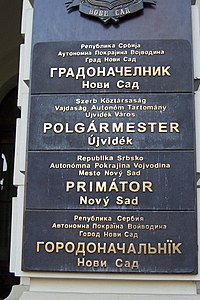
Photo from wikipedia
PURPOSE Multilingual children are disproportionately represented on speech pathology caseloads, in part due to the limited ability of traditional language assessments to accurately capture multilingual children's language abilities. This systematic… Click to show full abstract
PURPOSE Multilingual children are disproportionately represented on speech pathology caseloads, in part due to the limited ability of traditional language assessments to accurately capture multilingual children's language abilities. This systematic review evaluates the evidence for identification of language disorder in multilingual children using dynamic assessment and considers clinical applications of the evidence. METHOD A systematic search of the Cumulative Index to Nursing and Allied Health Literature, Education Resources Information Centre, Education Source, Google Scholar, Linguistics, Medline, and PsycINFO databases produced 10 articles that met the inclusion criteria: between-groups comparison studies that used dynamic assessment to identify language disorder in children under 12 years old that spoke a different language at home to the majority society language. Articles were critically appraised using the Quality Assessment of Diagnostic Accuracy Studies (QUADAS-2) protocol. RESULTS Nine of the 10 studies reported that their dynamic assessment identified language disorder in multilingual children. However, small sample sizes, limited language pairs, variability in the reference standard, and design deficiencies resulted in poor ratings for all studies on QUADAS-2. CONCLUSIONS The studies in this review reflected an emergent area of research. Preliminary guidelines for clinical application indicate that dynamic assessment may be a suitable and time-efficient complementary method of diagnosis of language disorder in multilingual children. Further recommendations about age of use, language of instruction, and relevant scores are included.
Journal Title: Language, speech, and hearing services in schools
Year Published: 2022
Link to full text (if available)
Share on Social Media: Sign Up to like & get
recommendations!